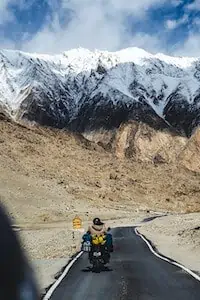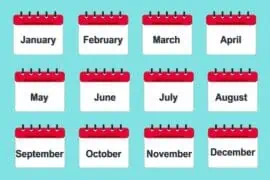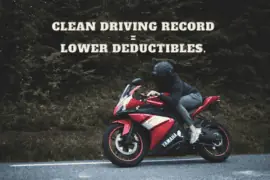Taking a long-distance trip on a motorcycle is one of life’s great joys. Although it isn’t for everyone, there are some great roads to travel and sights to see.
If you haven’t been to Sturgis, taken a bike to Yellowstone, or made your way up to Crater Lake in the fall, you’ve got some adventures to plan!
Didn't You Try Our Quote Comparison Tool Yet? Save BIG by Doing it!
When you want to cover a lot of distance in a single day, the first step of a long ride is to consider your endurance. Start working your way up to 400 miles by taking it in 50-mile increments. You’ll acclimate to the challenges these trips create while testing different setups for hauling supplies.
Once you’re physically ready to go for a long-distance ride, here are a few more concerns to address to ensure you have the best possible experience.
Table of Content
1. Review Your Motorcycle Insurance
Did you know different states have unique minimum liability requirements for motorcycle insurance? If you live in Florida and use a certificate of financial responsibility, that approach might not be recognized where you travel.
It helps to review your current insurance policy to see if it meets the minimums for where you plan to travel. If not, consider updating it to avoid a challenging conversation if you get pulled over for some reason.
If you lease or make payments on your motorcycle, you’ll need to review comprehensive and collision insurance as part of this step.
Check out for short-term coverage that suits your requirements.
2. Refine Your Setup
Most motorcyclists don’t go on a short weekend ride sporting a full kit. The extra weight can make the bike feel different when you load up all the supplies and gear needed for a long trip.
It helps to review your needs to see if top boxes, roll bags, and panniers are necessary for the trip. If you can find places to reduce weight, you’ll spend less on fuel while covering the miles.
Try riding with different configurations to see what you like the most. That’ll help you be more comfortable when you’re on the road.
3. Get an Early Start
Getting started early is the easiest way to cover many miles in a day. It’s basic math. If you average 70 miles per hour and need to cover 500 miles daily, you’ll need more than seven hours to arrive at your destination.
If you start your ride at 6 AM, you’ll get there (with stops) around 3 PM. That’s enough time to enjoy a few things before settling in for the evening to relax. You can reduce the extra time by combining your fuel stops with time for food, coffee, and stretching.
Earlier starts, especially in the summer, allow you to enjoy cooler temperatures and emptier roads. With fewer vehicles on the highway, you’ll have fewer traffic issues to manage.
Some people like to do the opposite, although riding at night can be tricky on a bike. Most models have a single headlight which other drivers can miss.
4. Reduce the Snacking Urge
Sitting down for a big lunch is tempting when you see a burger place offering a considerable discount for bikers. If you’ve been riding all morning, you’re probably starving. Add your favorite beverage into the mix, and it’s worth investing in an hour-long break.
When you consume a heavy meal while taking a long trip, you’ll feel tired for the next 45 to 90 minutes while on the road. If your attention isn’t 100% focused on what’s up ahead, you could end up putting yourself in a dangerous situation.
Save the big meals for when you arrive. Eat something small and healthy during your break, then drink water instead of caffeinated products to support your body.
5. Ride with a Buddy
A solo bike trip can be a relaxing experience where you get to know who you are better. It’s even better when you can share it with a friend.
When you ride with a partner, it helps to pair up with someone who shares your riding preferences. You won’t get far if they want to stop every 45 minutes to check on something.
Some people like to take their partner along for a long trip while sharing a motorcycle. This experience can be great, but it will be physically taxing for them. Make sure you’re building up stamina in your initial preparation steps.
Riding with partners could also change your motorcycle insurance needs. You’ll want to give everything a quick review before beginning.
6. Get the Gear
Nothing is worse than a helmet that sits heavy on your neck when covering 400+ miles. The headache starts halfway through the day, and nothing seems to improve.
If that’s paired with body armor or other riding gear that isn’t breathable or waterproof, you’ll feel like you got hit by a truck when you arrive.
Long-distance trips need a full-face helmet that protects your eyes and face completely. Sunburned lips are not fun! It also helps to ride with a screen for wind and insect impact protection.
As a final consideration, think about investing in some earplugs. A long day on the road with wind and back noise can cause issues with your hearing.
Where do you plan to travel for your first or next long-distance motorcycle trip?
Use This Tool for Free and Save on Quotes!






